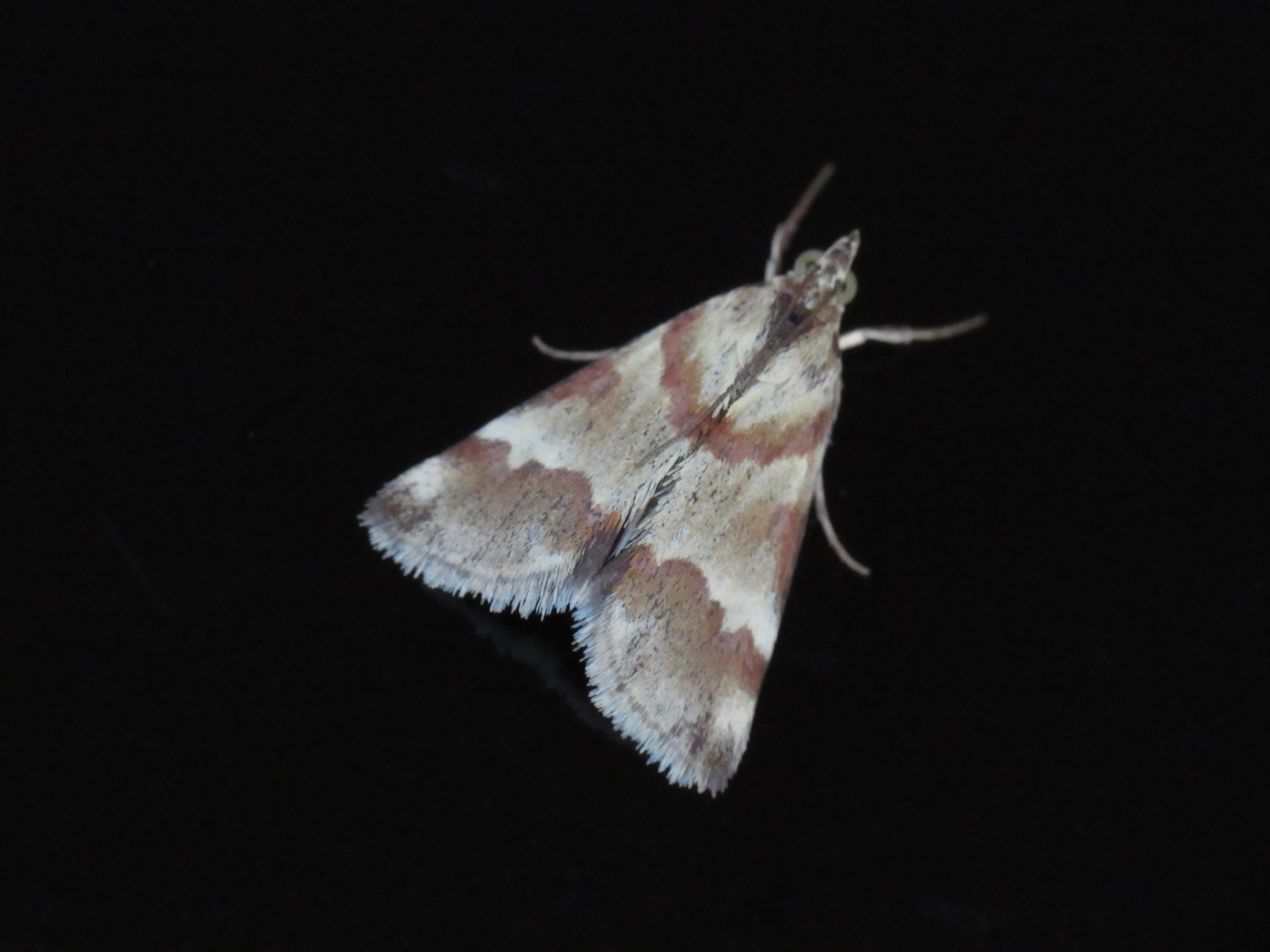canadian AND FEATHER-EDGED petrophila, Bold Medicine Moth, beet webworms, AND RUFOUS-BANDED CRAMBID
Spotted Beet Webworm moth. Notice that the white median band is jagged. The Hawaiian Beet Webworm (above) has a smoother edge on the median band.
Hawaiian Beet Webworm moth. Despite the exotic-sounding name, these moths are fairly common in our area.
Canadian Petrophila. I have found this species at my home moth lights, Caesar Creek, and along the Great Miami River.
Rufous-banded Crambid. The Peterson moth guide lists this species as rare for our part of the country, but I have found several of them. However, they are not overly common around here, except perhaps in years favorable for migrants. These moths are more common in the southwestern states.
Feather-edged Petrophila. This species differs from the Canadian Petrophila in that it has three small dots forming a triangle on each wing.

Another Hawaiian Beet Webworm moth. Both this species and the Spotted Beet Webworm (below) fly in autumn. I find Hawaiian Beet Webworms from September through early November.
Another Canadian Petrophila. Petrophila moths are fascinating insects. Their larvae are aquatic and feed on diatoms and algae from rocks in streams. The adult moths mimic jumping spiders in both behavior and appearance. (The purple-centered spots along the bottom edges of their wings are thought to resemble spider eyes.)
I have seen Feather-edged Petrophilas at my home moth lights, as well as Germantown MetroPark and along the Great Miami River, from June through September. I often encounter these moths in large numbers. They seem to prefer the same habitat as clubtail dragonflies, and I often see them while hunting for clubtails.
The Rufous-banded Crambid at left was photographed on June 17, 2017, at Sugarcreek Reserve. I also found one at Cox Arboretum on August 17, 2022, and I have found a couple of individuals at my moth lights from June through October.

Another Spotted Beet Webworm moth. They come to my lights from late August through early November.
This is a Bold Medicine Moth, a very tiny little moth. These moths closely resemble the Petrophila moths above. This Bold Medicine Moth is the only one that has visited my lights. June 24, 2024.
Canadian Petrophila. They come to my lights from late May through early September.